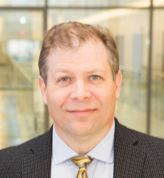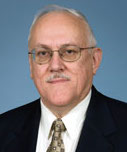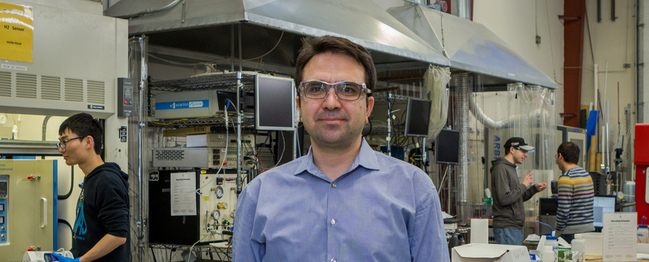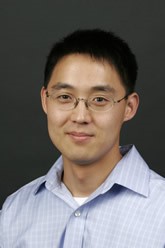 Abstract: The rapidly expanding interest in molten salt reactors (MSRs), particularly as small modular reactors, is resulting in the generation of multiple design concepts with efforts at a variety of early developmental stages. Various companies and organizations in a number of countries are looking at such systems to be safe, economical, and rapidly deployable power systems. For efficient design, operation, and regulation of MSRs it will be necessary to have the ability to simulate reactor behavior across the spectrum from neutronics and fluid dynamics to corrosion and salt phase behavior. MSRs have not been considered since the original prototype, the Molten Salt Reactor Experiment, that ran successfully from 1965-1969 at Oak Ridge National Laboratory, and thus there is little legacy of useful information. Aspects of potential modeling and simulation of future molten salt reactors will be discussed with respect to the unique challenges they present. Among the current needs are extensive thermophysical and thermochemical properties describing salts and other reactor materials. In particular, the ability to compute chemical and phase equilibria (e.g., potential solid phase precipitation) throughout the molten salt loop(s). Activities and opportunities in these areas will be discussed as contributing to development of a knowledge base for molten salt reactor technology.
Abstract: The rapidly expanding interest in molten salt reactors (MSRs), particularly as small modular reactors, is resulting in the generation of multiple design concepts with efforts at a variety of early developmental stages. Various companies and organizations in a number of countries are looking at such systems to be safe, economical, and rapidly deployable power systems. For efficient design, operation, and regulation of MSRs it will be necessary to have the ability to simulate reactor behavior across the spectrum from neutronics and fluid dynamics to corrosion and salt phase behavior. MSRs have not been considered since the original prototype, the Molten Salt Reactor Experiment, that ran successfully from 1965-1969 at Oak Ridge National Laboratory, and thus there is little legacy of useful information. Aspects of potential modeling and simulation of future molten salt reactors will be discussed with respect to the unique challenges they present. Among the current needs are extensive thermophysical and thermochemical properties describing salts and other reactor materials. In particular, the ability to compute chemical and phase equilibria (e.g., potential solid phase precipitation) throughout the molten salt loop(s). Activities and opportunities in these areas will be discussed as contributing to development of a knowledge base for molten salt reactor technology.
Biographical Sketch: Ted Besmann is Professor and SmartState Chair for Transformational Nuclear Technologies, directing the General Atomics Center at the University of South Carolina. Dr. Besmann received his B.E. in chemical engineering from New York University, M.S. in nuclear engineering from Iowa State University, and Ph.D. in nuclear engineering from the Pennsylvania State University. In 1975 he joined ORNL and subsequently became a Group Leader and Distinguished Member of the Research Staff. Besmann’s nearly 40 years at Oak Ridge National Laboratory included a joint appointment in the Nuclear Engineering Department at the University of Tennessee. Besmann has over 160 refereed publications, and is a Fellow of both the American Ceramic Society and the American Nuclear Society. He is chair of the Organization for Economic Cooperation and Development-Nuclear Energy Agency (OECD-NEA) Working Party on Multi-Scale Modeling of Nuclear Fuels and Structural Materials and is vice-chair of their Thermodynamics of Advanced Fuels-International Database program. Dr. Besmann is also Co-Director of the DOE Energy Frontier Research Center led by USC, the Center for Hierarchical Waste Form Materials.

 The talk will focus on two themes. The first will be an overview of our current ARPA-E project to condense water from flue gas for dry-cooled power plants power plants. Water use by power plants is an increasing concern across the U.S., and is particularly problematic in arid regions, such as the southwest. In this project, an advanced two-phase thermosyphon concept is employed that removes several of the traditional limitations of conventional thermosyphons. The condensed water can be used to pre-cool the condenser air to reduce the effective ambient temperature, for turbine inlet air evaporative cooling, or for other uses in the plant, as needed. The second portion of the talk will provide a short overview of other energy-related research activities in the Mechanical Engineering department at Stony Brook University with the goal to explore future opportunities for collaboration and joint projects between both institutions.
The talk will focus on two themes. The first will be an overview of our current ARPA-E project to condense water from flue gas for dry-cooled power plants power plants. Water use by power plants is an increasing concern across the U.S., and is particularly problematic in arid regions, such as the southwest. In this project, an advanced two-phase thermosyphon concept is employed that removes several of the traditional limitations of conventional thermosyphons. The condensed water can be used to pre-cool the condenser air to reduce the effective ambient temperature, for turbine inlet air evaporative cooling, or for other uses in the plant, as needed. The second portion of the talk will provide a short overview of other energy-related research activities in the Mechanical Engineering department at Stony Brook University with the goal to explore future opportunities for collaboration and joint projects between both institutions. The U.S. Army Research Laboratory (ARL) was activated 25 years ago with a mission to discover, innovate and transition science and technology to ensure dominant strategic land power. One of key research strategies at ARL is a development of superior protection systems for individual warfigter and vehicles. The protective systems often use polymers due to their low weight, good strength and toughness which improves resistance to ballistic penetration.
The U.S. Army Research Laboratory (ARL) was activated 25 years ago with a mission to discover, innovate and transition science and technology to ensure dominant strategic land power. One of key research strategies at ARL is a development of superior protection systems for individual warfigter and vehicles. The protective systems often use polymers due to their low weight, good strength and toughness which improves resistance to ballistic penetration.


